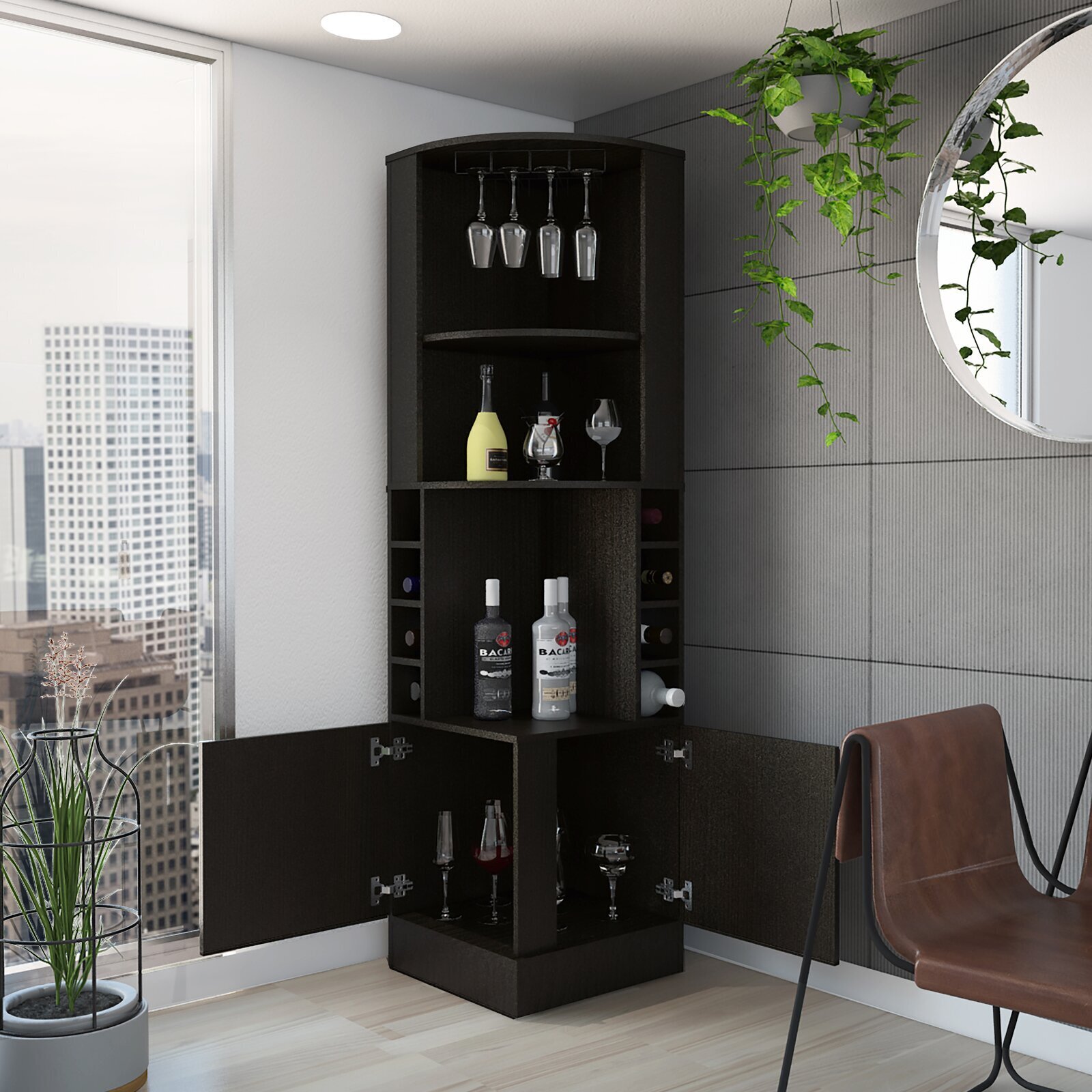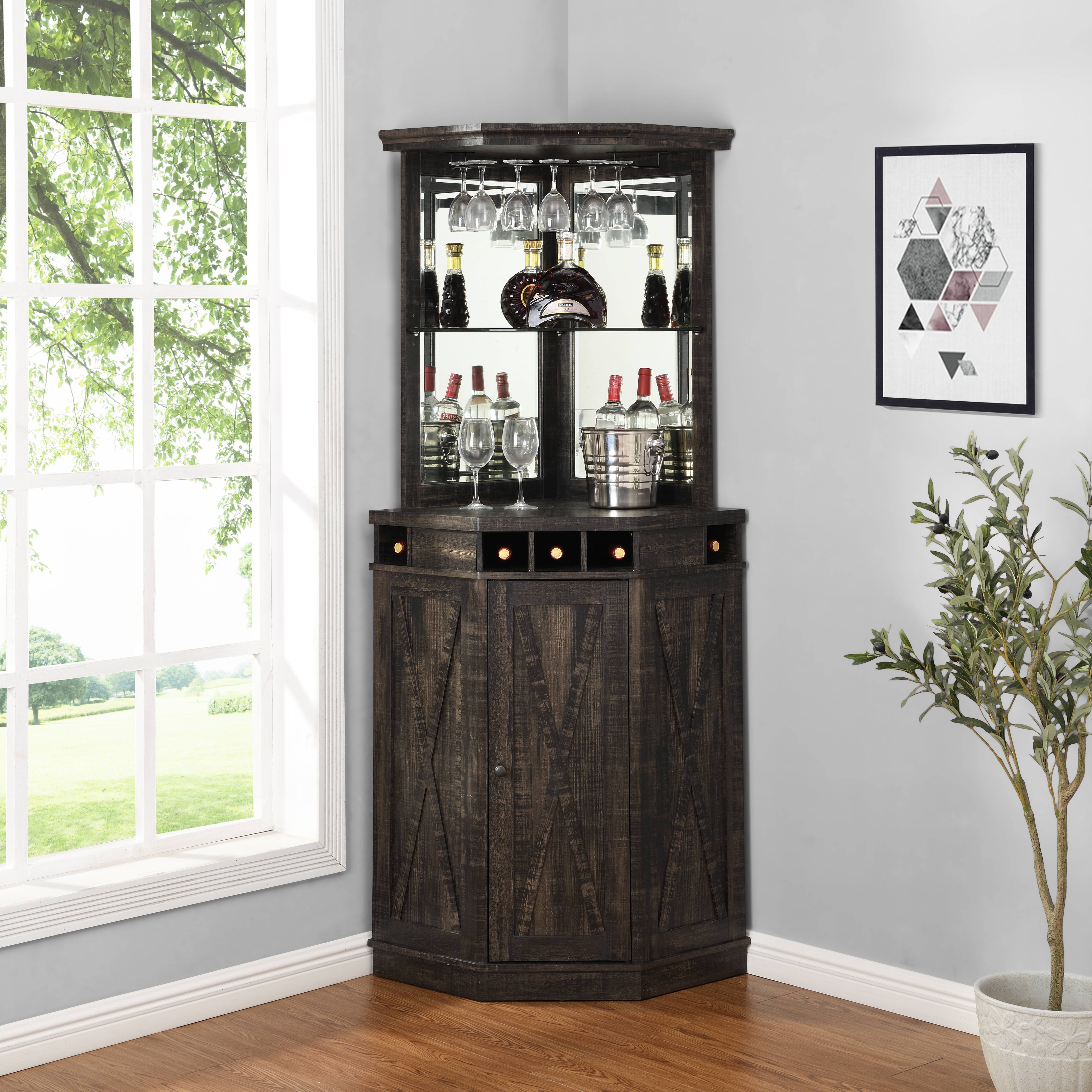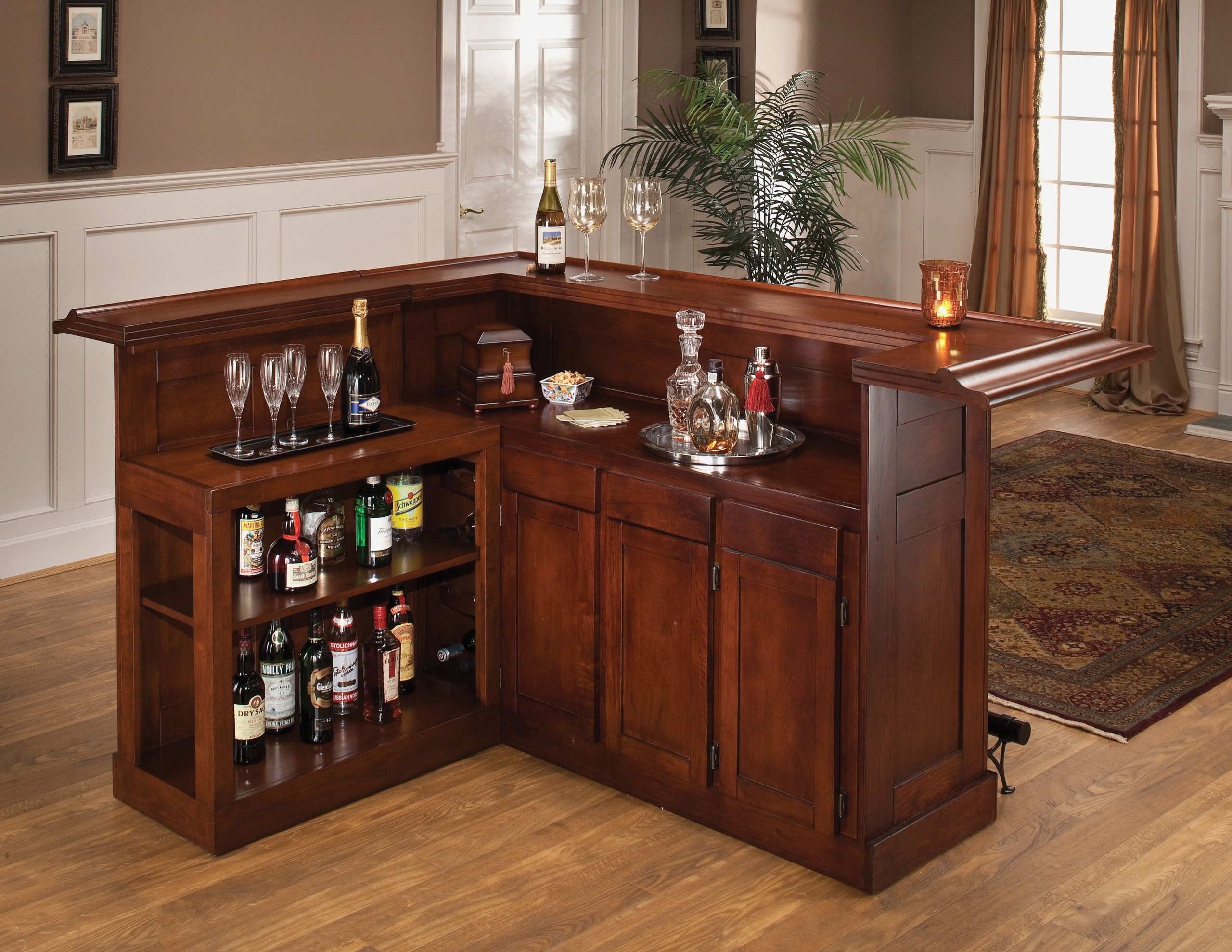Corner Bar Cabinet Styles and Designs for the Home: Corner Bar Cabinets For Home

Corner bar cabinets offer a stylish and functional solution for homeowners seeking to incorporate a home bar into their living space, particularly in smaller homes where space is at a premium. Careful consideration of style, design, and storage solutions is crucial to maximizing both aesthetics and practicality.
Modern Corner Bar Cabinet Styles
Three distinct corner bar cabinet styles can be incorporated into a modern home, each offering a unique aesthetic and functionality. These designs cater to diverse tastes and space constraints.
| Style Name | Material | Dimensions (approx.) | Key Features |
|---|---|---|---|
| Sleek Minimalist | High-gloss lacquered MDF, tempered glass shelving | 60cm x 60cm x 180cm (W x D x H) | Clean lines, hidden hinges, integrated LED lighting, mirrored back panel for added depth. |
| Industrial Chic | Reclaimed wood (e.g., pine or oak), metal accents (e.g., black powder-coated steel) | 70cm x 70cm x 190cm (W x D x H) | Open shelving for glassware display, metal framework, visible wood grain, rustic-industrial aesthetic. |
| Contemporary with Integrated Seating | High-pressure laminate, built-in cushioned seating | 80cm x 80cm x 160cm (W x D x H) | Built-in seating for comfortable entertaining, ample storage, sleek handleless design, soft-close drawers. |
Rustic Corner Bar Cabinet Design
Imagine a rustic corner bar cabinet crafted from reclaimed oak, its rich, honey-brown tones enhanced by a natural oil finish that highlights the wood’s grain and character. The cabinet features hand-forged iron hinges and pulls, adding a touch of aged elegance. The design incorporates a combination of open shelving to showcase glassware and closed cabinets for storing bottles and bar accessories. The overall aesthetic is warm, inviting, and subtly sophisticated, perfectly suited for a farmhouse-style kitchen or a cozy living room. The placement could be in a corner near a fireplace or a large window, creating a focal point within the room.
Space-Saving and Functional Design Elements for Smaller Homes
Corner bar cabinets are inherently space-saving due to their triangular footprint, which maximizes the use of often-underutilized corner spaces. Clever design elements further enhance functionality in smaller homes. For instance, pull-out shelves provide easy access to stored items, while multi-tiered shelving optimizes vertical space. Built-in bottle racks and specialized compartments for glassware and bar tools further streamline organization. Utilizing mirrored back panels creates an illusion of larger space, while integrated lighting adds a touch of elegance and functionality. A slim profile design minimizes the cabinet’s overall footprint, allowing it to blend seamlessly into smaller rooms.
Choosing the Right Corner Bar Cabinet for Your Home

Selecting the perfect corner bar cabinet can significantly enhance your home’s aesthetic appeal and functionality. The right choice depends on several factors, including your budget, the available space, and your personal style. Careful consideration of these elements will ensure a seamless integration of your new bar cabinet into your home’s design.
Built-in versus Freestanding Corner Bar Cabinets, Corner bar cabinets for home
The decision between a built-in or freestanding corner bar cabinet involves weighing various pros and cons. Both options offer unique advantages, and the best choice depends heavily on your specific needs and circumstances.
- Cost: Built-in cabinets generally involve higher initial costs due to the labor involved in custom design and installation. Freestanding units are typically more affordable, readily available for purchase and installation is straightforward.
- Installation: Built-in cabinets require professional installation, adding to the overall expense and potentially causing disruption during the process. Freestanding units are easily installed by a homeowner and can be repositioned as needed.
- Customization: Built-in cabinets offer unparalleled customization, allowing for precise dimensions and design features to perfectly match your space and style. Freestanding cabinets offer less flexibility in terms of customization, although a wide variety of styles and sizes are commercially available.
Considerations for Size and Layout of the Home Bar Area
The size and layout of your home bar area are crucial factors influencing your corner bar cabinet choice. Careful planning ensures optimal functionality and a visually pleasing result. Insufficient space can lead to cramped conditions and hinder accessibility, while oversized cabinets can overwhelm a smaller area.
Corner bar cabinets for home – Consider the traffic flow around the bar area. Ensure sufficient space for comfortable movement, preventing bottlenecks or collisions. Accessibility is equally important; the cabinet should be easily accessible without obstructing other furniture or pathways. For example, a large cabinet might be suitable for a spacious room with ample walkway space, but a smaller, more compact cabinet would be a better choice for a smaller area or a space with limited traffic flow. A good rule of thumb is to allow at least 3 feet of clear space in front of the cabinet for easy access.
Measuring Your Space for the Perfect Fit
Accurate measurements are essential to ensure your corner bar cabinet fits perfectly. A simple, yet effective approach involves a step-by-step process combining measurements with a sketch.
- Clear the Area: Remove any obstructions from the corner where you plan to install the cabinet. This ensures accurate measurements.
- Measure the Corner: Measure the width and depth of each wall forming the corner. Note any irregularities or obstructions, such as pipes or electrical outlets.
- Measure the Height: Measure the height from the floor to the ceiling, noting any variations in height.
- Create a Sketch: Draw a simple sketch of the corner area, including the dimensions you’ve measured. This visual representation will help you visualize the cabinet’s placement and potential size limitations.
- Consider Depth: Determine the maximum depth you can accommodate while still allowing for comfortable movement around the cabinet. Consider how far the cabinet will protrude into the room.
- Account for Doors and Drawers: If the cabinet has doors or drawers, ensure you account for the space they require when open. This prevents the cabinet from obstructing walkways or other furniture.
Remember to always measure twice and cut once! Accurate measurements are crucial to avoid purchasing a cabinet that doesn’t fit your space.
Building and Maintaining Your Corner Bar Cabinet

Constructing and maintaining a corner bar cabinet involves careful planning and execution. From assembling a flat-pack unit to preserving its aesthetic appeal and functionality over time, understanding the process ensures years of enjoyment. This section details the steps involved in both building and maintaining your new bar.
Tools and Materials for Assembly
Successfully assembling a flat-pack corner bar cabinet requires the right tools and a methodical approach. Having all necessary components readily available streamlines the process and minimizes frustration. Improper assembly can lead to instability or damage.
- Tools: Rubber mallet, Phillips head screwdriver, flathead screwdriver, measuring tape, level, pencil, safety glasses.
- Materials: Corner bar cabinet kit (including all panels, hardware, and instructions), wood glue (optional, for added stability), additional screws (in case of breakage or loss), protective surface covering (e.g., cardboard or drop cloth).
Assembly Process
The assembly process typically involves following the manufacturer’s instructions carefully. However, general steps include:
- Preparation: Lay out all parts and hardware according to the instruction manual. Ensure you have a clean, spacious work area.
- Base Assembly: Begin by assembling the base components, usually the bottom panels and supporting structures. Use screws and a screwdriver to secure joints.
- Side Panel Attachment: Attach the side panels to the assembled base, ensuring they are level and square. Use a level to check alignment frequently.
- Shelf Installation: Install shelves according to the manufacturer’s instructions. Some cabinets utilize pre-drilled holes, while others require precise measurements.
- Door and Drawer Installation: Install doors and drawers, ensuring smooth operation and proper alignment. Adjust hinges and drawer slides as needed.
- Finishing Touches: Once all components are assembled, inspect for any loose parts or misalignments. Tighten any loose screws.
Maintaining Different Materials
The longevity and aesthetic appeal of your corner bar cabinet depend on proper maintenance. Different materials require specific cleaning and care techniques.
Wood Cabinet Maintenance
Wood cabinets require regular dusting to prevent the accumulation of dust and grime. For cleaning, use a slightly damp (not wet) cloth and a mild wood cleaner. Avoid harsh chemicals or abrasive cleaners that can damage the finish. Periodically apply a wood polish or conditioner to maintain the wood’s luster and protect it from dryness and cracking. Address spills immediately to prevent staining.
Metal Cabinet Maintenance
Metal cabinets are generally more durable and easier to clean than wood. Regular dusting with a dry cloth is sufficient for routine maintenance. For more thorough cleaning, use a damp cloth and a mild detergent. Avoid abrasive cleaners that can scratch the metal surface. If rust appears, address it immediately using a rust remover and protective coating.
Glass Cabinet Maintenance
Glass shelves or doors require careful handling to avoid breakage. Clean glass surfaces with a glass cleaner and a soft cloth. Avoid abrasive cleaners that can scratch the glass. For stubborn stains, use a specialized glass cleaning solution.
Organizing the Interior
A well-organized interior maximizes storage space and enhances the overall appearance of your corner bar cabinet. Strategic use of dividers, trays, and other organizational tools is key.
Consider using adjustable shelves to accommodate bottles of varying heights. Dividers can separate glassware, creating distinct sections for wine glasses, shot glasses, and other items. Trays can hold bar tools and accessories neatly. Utilize the vertical space by stacking items efficiently. A well-organized interior might feature a bottom shelf for larger liquor bottles, a middle shelf with dividers for glassware, and a top shelf for bar tools and accessories, all neatly arranged and easily accessible.
